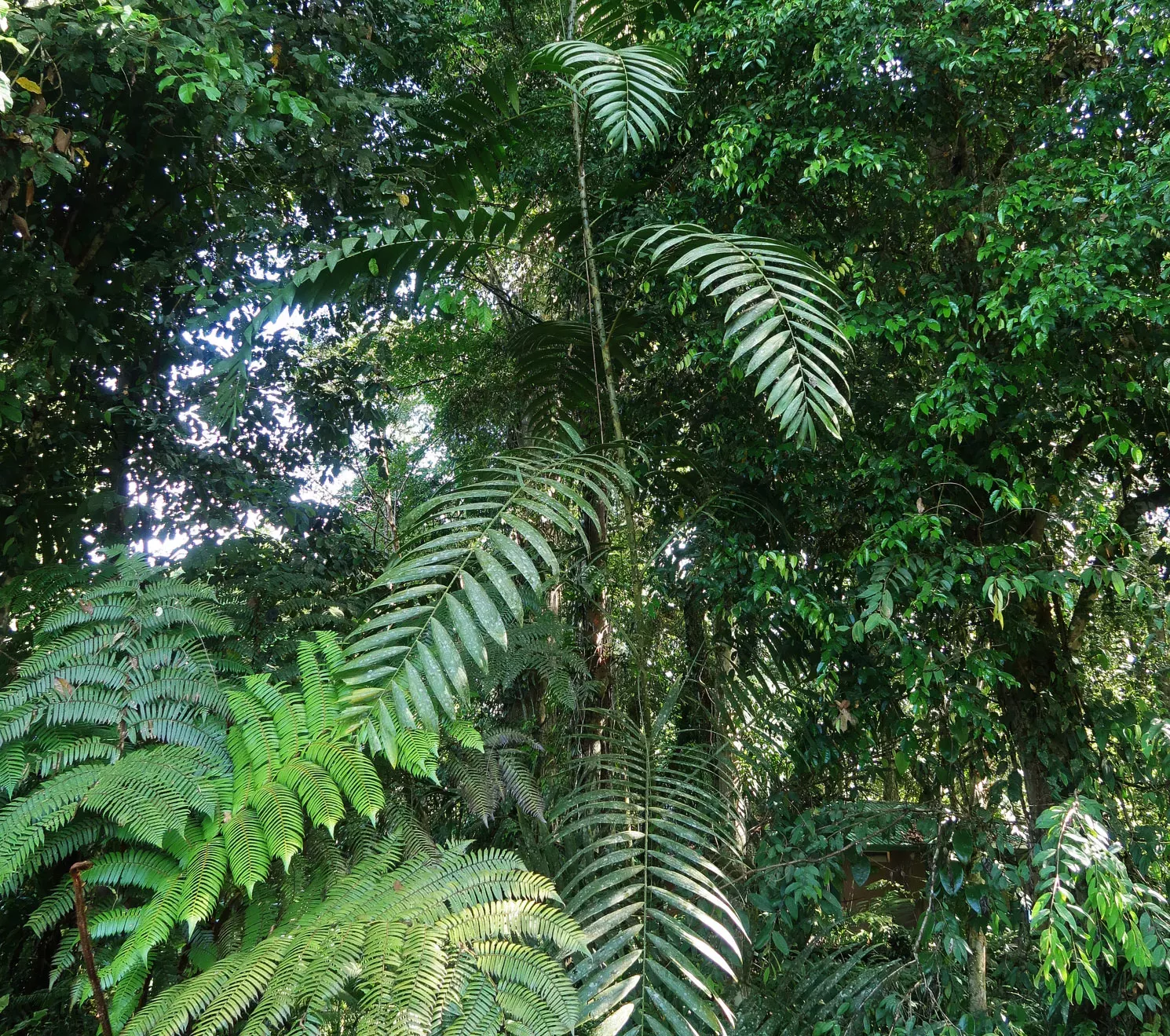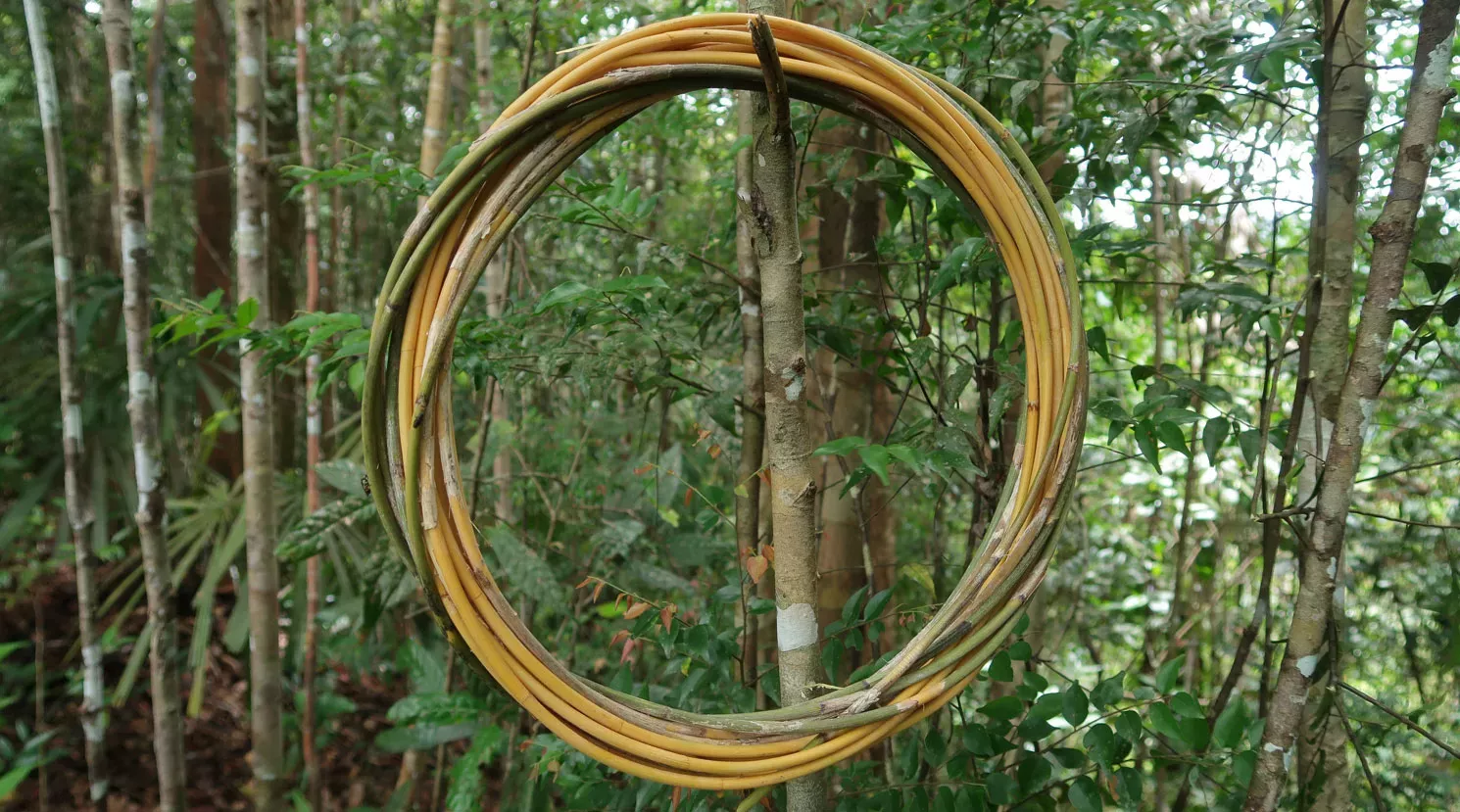DNA barcoding and conservation of rattans in trade
Developing comprehensive DNA-based identification tools and extinction risk analysis to support a more sustainable rattan industry

Rattan products - a multibillion-dollar industry
Rattans are spiny climbing palms – their long, flexible stems are the source of rattan cane, which is harvested mainly from the wild.
Rattan is the raw material on which a multibillion-dollar trade in cane furniture and other woven articles are built.
Out of the 487 species of rattan palms worldwide, numerous are reported to be utilised for cane products.
Most of these species occur in the tropical rainforests of Asia and the Pacific region.

Urgent need for reliable tools for identification and risk assessment
Wild rattans are harvested extensively from tropical rainforests.
Consequently, the sustainability of the rattan industry is in question, and important traded species are now commercially extinct in some parts of their range.
To realise a sustainable rattan industry, fundamental knowledge gaps on the distribution, identification and conservation status of traded rattans must be filled so that stakeholders can be empowered to act responsibly and drive change in the industry.

A genomic toolkit for rattan authentication
Currently, there is no means of identifying traded species once they have entered the supply chain.
All diagnostic features of rattans are removed on harvesting – bare canes cannot be identified to species using morphological or anatomical features alone.
This presents a major obstacle to sustainable management of wild resources, effective monitoring of supply chains and informed consumer choice.
To address this issue, we are developing novel DNA-based identification methods (DNA barcoding) building on our expertise in palm genomics.
Drawing on Kew’s unrivalled collections of rattan specimens, we are generating a comprehensive genomic reference database for all rattan species.
We are developing protocols for generating DNA sequence data from processed rattans, including finished articles, which can be identified using our global rattan reference database.
The database and workflows will be made publicly and freely available.
Extinction risk analysis
The second major obstacle to rattan resource management is the lack of knowledge of the extinction risk faced by species.
The global standard for assessing conservation status of species is set by the International Union for the Conservation of Nature (IUCN) through the IUCN Red List of Threatened Species.
To date, less than 10% of rattan species have been published on the Red List.
As a result of this information vacuum, it is possible that rattan species at risk of extinction are entering supply chains.
To fill this knowledge gap, we are laying the foundations for the first formal conservation assessment of all rattans.
We are establishing an authoritative database of spatial occurrences of all rattans, which will be used in extinction risk predictions for all species using a machine learning approach.
This will then be used to define a strategy for future formal extinction risk assessments of all rattans, following IUCN standards.
In the meantime, these predictions can be used to help rattan traders evaluating the number of potentially threatened species entering their supply chain and to make decisions to improve the sustainability of their activity.
Why Kew?
Kew holds the world’s richest scientific collection of palm specimens and leads the production of major information resources, such as a checklist of all rattan species and their distributions, and an evolutionary tree of life including all rattan palms.
Kew also co-leads networks such as the European Network of Palm Scientists and the IUCN Palm Specialist Group.
Kew has long-standing expertise in plant taxonomy, genomics and conservation, making it the right place to develop such interdisciplinary projects.
Principal investigators
Prof William J. Baker
Sidonie Bellot
Data production
Jason Stevenson
László Cziba
Rowan Schley
Data analysis
The following outputs will be made freely available to the public:
- A complete reference database for DNA authentication of rattans
- Robust laboratory and bioinformatic protocols for rattan identification
- An authoritative database of rattan spatial occurrences
- Preliminary extinction risk assessments for all rattan species
IKEA of Sweden AB
IKEA of Sweden AB
Cowell, C., Paton, A., Borrell, J.S., et al. (2021)
Uses and benefits of digital sequence information from plant genetic resources: lessons learnt from botanical collections.
Plants, People, Planet 4: 33–43
Kuhnhäuser, B.G., Bellot, S., Couvreur, T.L.P., et al. (2021)
A robust phylogenomic framework for the calamoid palms.
Mol. Phylogenet. Evol. 157: 107067.
Bellot, S., Odufuwa, P., Dransfield, J. et al. (2020)
Why and how to develop DNA barcoding for palms? A case study of Pinanga.
Palms 64: 109-120.
IKEA. (2019).